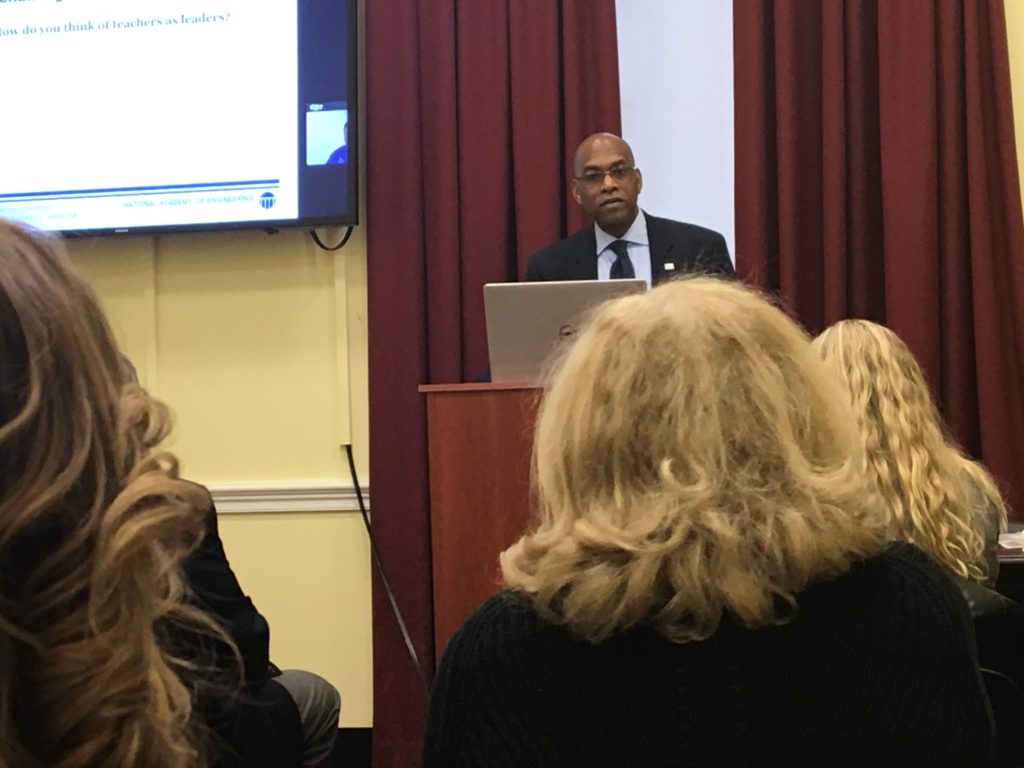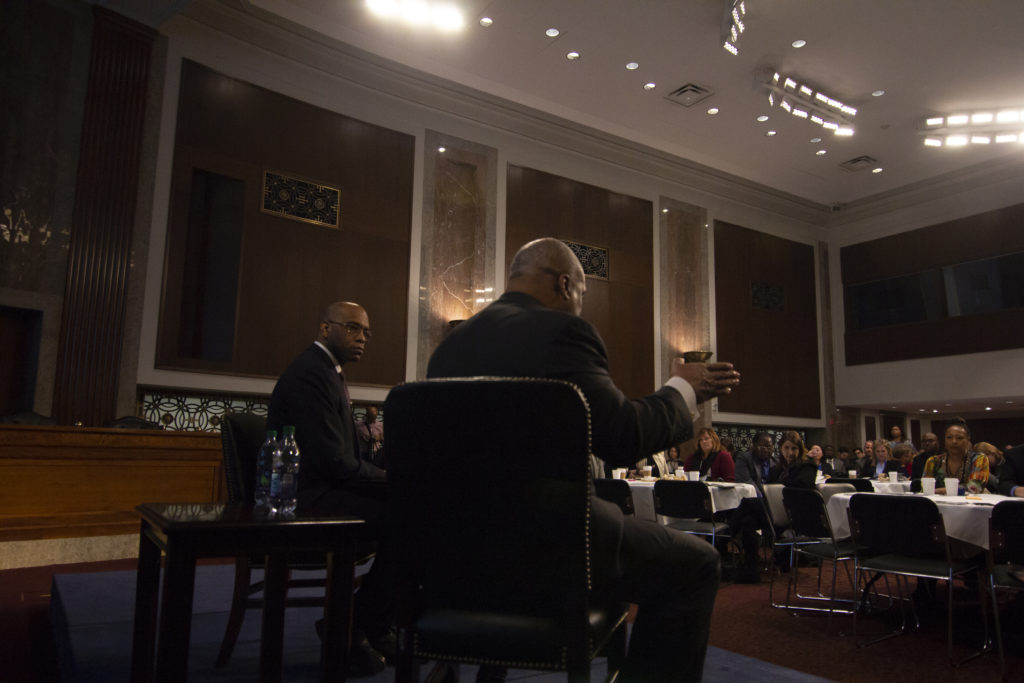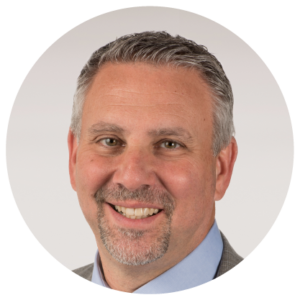A Q&A with the American Society for Engineering Education’s Executive Director Norman Fortenberry
Liaison’s Executive Director of Association Partnerships Ron Hyman recently asked Norman Fortenberry, Executive Director of the American Society for Engineering Education (ASEE), for his insight into how he and his colleagues are planning for their discipline’s future. ASEE is a strategic partner behind EngineeringCAS, the only Centralized Application Service (CAS™) for graduate engineering programs.
Ron Hyman (RH), Liaison: Thank you for your time today, Norman! I’d like to start with the numbers — According to the Bureau of Labor Statistics, overall employment of engineers is projected to grow 4.0% from 2014 to 2024, with a select few occupations — civil engineers, environmental engineers and biomedical engineers, specifically — growing even faster than the 6.5% projected rate for all occupations.
On the other hand, three engineering occupations are expected to lose jobs during this decade: Electronics engineers, except computer, are projected to lose about 1.4% of their jobs; Aerospace engineers, 2.3%; Nuclear engineers, 4.0%.
Since your association focuses on preparing future engineers for the workforce, what do you read into these numbers? What trends do you see and how are you and the other leaders responsible for planning for the future of engineering education responding to them?

Norman Fortenberry (NF), ASEE: Honestly, I don’t spend a lot of time thinking about the numbers. The way I see it, any student should seek work that they find interesting and challenging — there will always be cycles where there is greater or lesser employment in one area or another. Fortunately for our industry, a well-educated engineer has the flexibility to shift to another closely related area if their particular specialty faces a lack of demand.
Most fundamentally, what numbers of this type tell me is there’s growing recognition of the importance of being able to work at the interface of disciplines. Interdisciplinary and multidisciplinary work are critical. We need to work with people from different disciplines in order to get jobs done, and it’s important that we prioritize lifelong learning as our world evolves and changes.
There’s an old saying, “Universities have departments — nature does not.” Outside of academia, we’re always working across disciplines to solve real-world problems — that’s engineering for you. One sub-discipline is up, and one’s down? That doesn’t deserve our focus. What we need to prioritize is the quality of preparation, so our students are ready to think critically and address novel problems as they deliver solutions that serve human needs.
RH: Overall, do you feel engineering education is focusing on “the right things”? Do you believe it’s fostering a love of lifelong learning?
NF: I do. Over my three decades in this discipline, there’s been work on engineering curricula to eliminate the dichotomy between hands-on and theoretical learning, to find a balance between hands-on and minds-on. We recognize that engineers don’t work in isolation, and that real-world problems require us to be able to engage with the real world.
Engineers solve human problems. To do that you’ve got to understand the ways humans are struggling. We’re not isolated techies off in a corner; we are engaged with the world, and our curricula are beginning to reflect that.
There’s a strong emphasis on fundamental knowledge, but once that is established, there must also be interaction with other disciplines. Applications go beyond a single discipline, therefore the abilities to work in teams and communicate across disciplines are increasingly critical. That’s what industry tells us, and that’s what’s guiding our curricula moving forward.

RH: That’s a great transition to my next question, because I’m interested to hear your perspective on how technology shifts drive change in education.
Specifically, studies like Stanford’s One Hundred Year Study on Artificial Intelligence (AI100) suggest that artificial intelligence (AI) does not pose an imminent threat to workers, yet many engineers still fear that their jobs could soon be taken over by advanced robots. It’s understandable when you consider that many of the world’s major players are participating in the race to fund such technological advances, including France, where President Emmanuel Macron has pledged $1.5 billion to put his country at the forefront of AI research; the U.S., which requested $110 million to invest in AI in its military’s fiscal 2019 budget request; and China, with its three-step development plan and overarching goal to lead the AI industry by 2030.
What do technological advances like AI mean for the future of engineering education, Norman?
NF: More so than just reacting to change, I think we recognize there are a variety of new and powerful tools available now — in fact, engineers have created some of those tools. So, as a new tool comes along, the engineer thinks, “How do I use this tool to accomplish my objective?” When we went from the slide rule to the calculator, we didn’t say, “This is a major change in technology.” We said this is a better tool that allows us to do analysis more quickly. Now, we’ve got to have confidence in this black box calculator or this computer. Once you have confidence in the processes of the tool, you can use it to tackle more complex problems. That’s the way we view AI: It’s just another tool to solve ever more complex problems.
RH: What other technology trends are you tracking? Are there any other tools like AI that have caught your eye?
NF: AI is a major change — That’s why you’ve heard all of these references to “Industry 4.0,” with steam being 1.0, followed by mechanical and then electrical power. It’s a major advance that opens the door to blending the constructed world with the biological world. I’m not going to diminish that — It is a major advance, but it is a tool. Do we see anything else like that on the horizon? Not at that level.
RH: When I’m thinking on that level, I think of the internet, especially since it has helped our world make great strides towards becoming more connected. Still, we’ve struggled with wealth gaps that separate those who have access to technology and those who do not.
Developments like blockchain have given global leaders confidence that we may be able to address this accessibility issue and truly connect people across geographic borders to more opportunities. If we do continue to work towards what the World Economic Forum’s Global Futures Council on Blockchain deems a “new era of globalism,” what will this increased connectivity mean for engineering education?
NF: We have to take extra care to make sure those communication skills I mentioned before are not only dealing with different disciplines, but with different cultures across boundaries and borders as well! We’re working on projects now where design drawings begin in Singapore; then the drawings travel to Japan, then the United States and then production starts in Germany, so being on the same page about what’s happening every step of the way is crucial.
I’m thinking of an example — a very large-scale one, at that— and I don’t remember it in great detail, but it had to do with a NASA craft the U.S. was working on with another country. Ultimately the craft couldn’t connect to the space station because the space station used the metric system and we used different units of measure! It seems like a small thing, but when you’re talking about a spacecraft, that’s millions of dollars in both materials and personnel time rendered useless because nobody communicated what the proper units were. That’s a trivial example — units — but it illustrates the importance of communication across cultures.
Similarly, fighting the California wildfires, there have been radio interviews with people from Australia and New Zealand who have come over to the U.S. to help. In the first interview I listened to, one of the speakers said, “You know, in Australia, when we talk about a tanker, we mean a big truck on wheels — it carries fluid. When American firefighters say, ‘I need a tanker,’ they mean an airplane.” So, if you say “I need a tanker, and I need it now,” you get a very different thing depending on who you’re talking to if you don’t understand cultural context.
What I’m talking about here is not only good engineering practice but good communications practice as well.
RH: It’s clear that appreciation for and an understanding of diverse perspectives is important and will continue to be important moving forward, yet we do still face a somewhat homogenized engineering workforce. In fact, the National Science Foundation found that African Americans comprised 2.6% of the engineering workforce in 2014, while Hispanics constituted 6.6% and women accounted for 14.8%.
Since low minority workforce participation in STEM is driven by low numbers of underrepresented populations pursuing degrees in these fields, how does graduate engineering education need to change in order to meet the goal of building a more diverse workforce?
NF: First and foremost, we need to work on retention. Across the board, engineering nationally has around a 40% attrition rate — 40% of the students who start do not finish. That’s counting those who were admitted into an engineering program. Let’s be clear that these are not weak students. We have data going all the way back to 1997’s Talking About Leaving: Why Undergraduates Leave the Sciences stating that a number of students leave science and engineering fields not because they can’t hack the work, but because they’re not properly instructed. We need to first and foremost retain those students who have already expressed an interest, taken the time to enroll and found their way to our classrooms.
Concurrently with doing that, we need to engage younger students by having proper role models at the precollege and collegiate levels. This is one of a large number of components to keep in mind as we work on building welcoming environments, understanding that students have choices when it comes to their education and their career paths, and they won’t hesitate to vote with their feet.
Engineering and science, in general, used to be in a position where faculty took pride in being the weed-out or filter courses: “Look to your left, look to your right — only one of you will be here in three years…” We don’t have that luxury anymore. Engineering’s career satisfaction and compensation rates have to compete with those of other satisfying career fields for very bright students.
So, we need to compete, we need to explain to students the attractions of an engineering career and we need to move away from harping on how hard this is as a field. You don’t see people talking to future doctors saying, “You’re going to spend a lot of time memorizing gross anatomy and dissecting things and trying to memorize all the parts.” They say, “You’re going to save lives.” The average doctor or surgeon treats one person at a time. An engineer creates a system, a product, a process that affects hundreds of lives at one time. If an airplane goes down or a building implodes, there are a lot of lives at stake.
The quality of human life is directly tied to engineering. If you look at everything that is not growing on a tree — and even some things that are growing on trees— they’re the result of engineering. We need to communicate that message to potential students better. Demographics are telling us that’s particularly important for women and underrepresented minorities, but many white males are looking for relevance in what they do as well. We have to explain the human relevance of engineering as a profession if we are to attract and retain more students.

RH: Related to doing this important work, ASEE was one of the first engineering societies to partner with Liaison on EngineeringCAS, the Centralized Application Service (CAS) for graduate engineering programs. In previous interviews, you’ve offered insight into why you see participating in this initiative as valuable for your members, with one particular reason being that those who participate in the CAS can collaborate closely with colleagues, sharing best practices and implementing new ideas.
Can you share more about some of the other projects and initiatives that ASEE is currently undertaking to help its members work together for the benefit of the engineering field as a whole?
NF: As a society, ASEE places strong emphasis on broadening participation and diversity. For the past several years, we have had sessions at our annual meeting, write-ups in our magazine and activities at our section meetings focused on building a more inclusive environment for women, minorities and members of the LGBTQ+ community. We haven’t done as good a job as we should concerning people with disabilities, but we recognize we need to do more there as well. That’s the society overall.
We’ve done Safe Zone workshops for LGBTQ+ community members, and the engineering deans have something called the Deans Diversity Initiative which is looking at building a more inclusive precollege pipeline for women and minorities, strengthening the retention of those populations at the undergraduate level and encouraging students in those groups to go on to graduate degrees. That’s part of where EngineeringCAS comes in. We want to have a more diverse professoriate, both for role models and viewpoints for problem-solving, and we’re working on a major gender equity initiative for women faculty that we hope to be starting in the next few months.
We’re also continuing with efforts like our National Effective Teaching Institute. If we get faculty in the classroom, they should know the research that informs effective teaching and how to implement that research base. We’re trying to get that information out so time spent in classrooms is as effective as possible.
Overall, we’re taking a more holistic view to engineering faculty, whether that means considering their unique backgrounds or keeping in mind their work as researchers and also as higher-level administrators: chairs, deans, etc. People no longer have the luxury they had in the 1950s. The stereotypical engineer, whether in industry or academe, was male, living in a traditional household with someone else who took care of running that household. Now, engineers live in two-career households — they have issues with child care, elder care. They’re stretched thin, so they need to be as effective as possible across a broad spectrum of their professional life — and their personal life, but that’s a bit outside our purview.
What we’re trying to do as a society is transmit the message that ASEE makes you more effective and we do that by providing guidance and education, whether you are a new faculty member, a student counselor, a dean, a chair or a corporate recruiter. Across the board, if you are a member of ASEE, we’re here to make you more effective at your job.
RH: Thank you so much for your time, Norman. It’s been great hearing your perspective. Is there anything else you’d like to add or emphasize before we wrap up?
NF: I want to emphasize the point you made about being in a connected world — Increasingly, we need to think globally. We need to recognize that there’s very little that is truly someone else’s problem. Take the example of air pollution — We recognize now that air pollution travels on the jet stream, so if we don’t solve air pollution in a number of places, then we still have a problem that needs to be solved. It’s even more critical with the way we treat our water. Planetary-scale issues that we may try to treat as local or national problems are really global problems.
As the saying goes, we need to think globally but act locally because we’re all connected. Engineering is central to both recognizing that connectivity and addressing problems systematically, so we can all have a better future.

